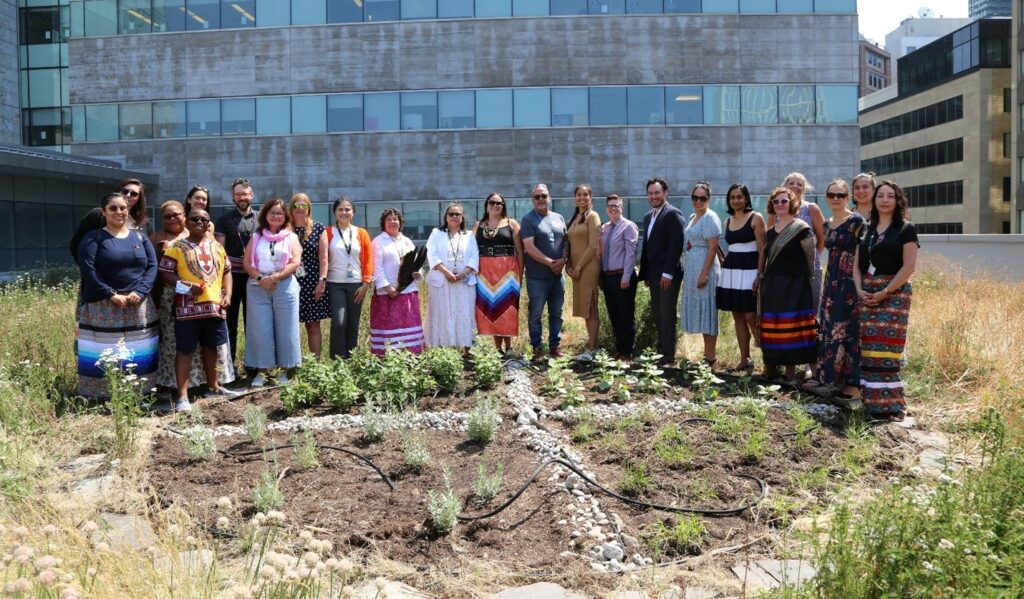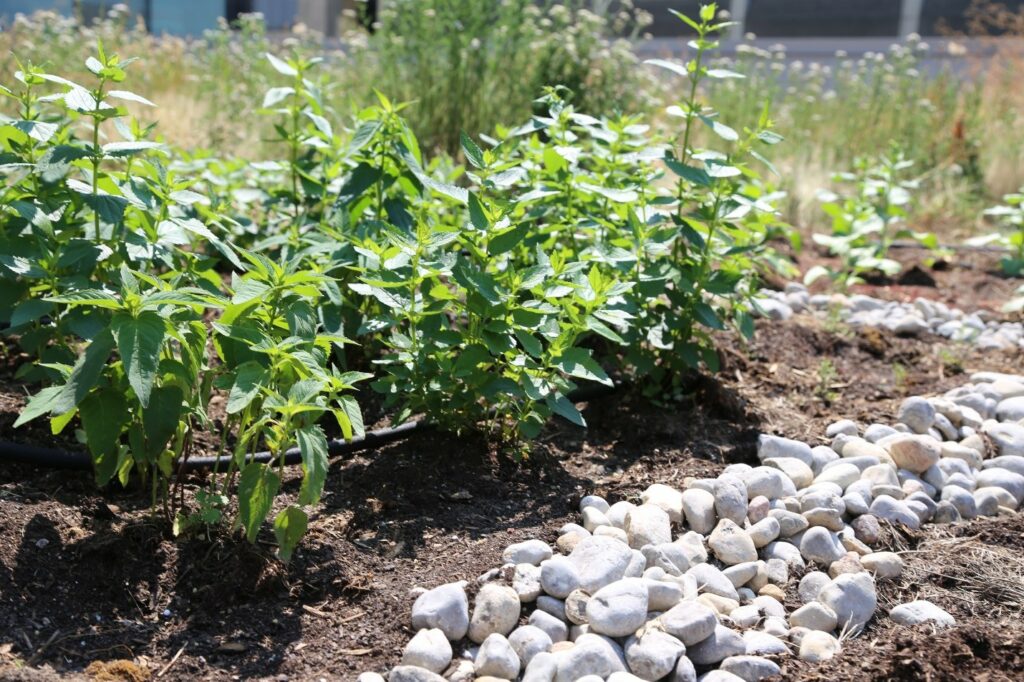
This past National Indigenous Peoples Day (June 21), the sun beamed vibrantly as the Ganawishkadawe-Centre for Wise Practices in Indigenous Health (GCWP-IH) celebrated the opening of its rooftop medicine garden at Women’s College Hospital (WCH). By growing and harvesting medicines used for the spiritual well-being of First Nations, Inuit or Métis (FNIM) community members, the GCWP-IH can offer a new model of care for its patients.
“When First Nations, Inuit or Métis patients come to Women’s for testing, treatments or procedures, we will have a viable means to offer them comforts for preparation, prayer, purification and spiritual healing by maintaining our own crop of medicinal instruments,” shares Christine Monague, Indigenous Peer Support and Relations Advocate. “It is an extension of the Centre, really. It’s nice to be self-sustaining.”
WCH team members and Indigenous community partners joined in the traditional ceremony, which coincided with the summer solstice. “We celebrated abundance and acknowledged the medicines as a gift,” describes Kawennanoron Cynthia White, Elder-in-Residence and Traditional Healer at WCH. “We asked the spirit and natural world to work in concert with each other for the success of the garden.”
Tobacco, used as a prayer offering to connect with spirit, sage and sweetgrass for smudging and purification in preparation for prayer, ceremony and spiritual grounding are the sacred plants chosen to flourish in the garden. Among the medicinal plants taking root here are hyssop-yellow giant, smooth aster, blazing star, mint and wild bergamot. “These plants have been used for hundreds if not thousands of years and are included in many teachings like the Creation Story,” added White.
As part of the Niigaan ezhi-wiidsendiying, Centre for Community Partnerships, University of Toronto summer student program, Symone Peltier supported as Project Coordinator, and Jared McElroy-Walker as Communications Assistant at GCWP-IH. Both helped bring the garden to fruition in collaboration with WCH, Black and McDonald and Gingko Sustainability. In the process, Peltier and McElroy-Walker learned more about First Nations practices, how colonization has shaped healthcare and more about their own Indigeneity.
“It felt really rewarding knowing I was part of something that other Indigenous peoples can use to either connect – or reconnect – with their culture in a space that is dominated by Western medicinal practices,” says Peltier. “During this process, my goal shifted from that of a typical student to ensuring Indigenous people who visit the hospital have a source of comfort when they arrive.”

Mint growing in the medicine garden
No matter which part of Ontario patients come from, the Ganawishkadawe-Centre for Wise Practices in Indigenous Health has worked tirelessly to create a safe space for those seeking traditional supports, comfort and healing during their hospital visits. Initiatives like the medicine garden and creating smudge kits (already in place), are the GCWP-IH’s continued priorities to provide Indigenous patients with a level of care they desire and deserve.
“The medicine garden is another turning point in honouring the sacred practices of our ancestors,” shares White “The presence of the medicine garden at WCH will benefit all staff and patients by providing a sustainable source of purification, healing and preparation – the spiritual power each plant holds is a blessing for the WCH community.”
Learn more about the GCWP-IH.